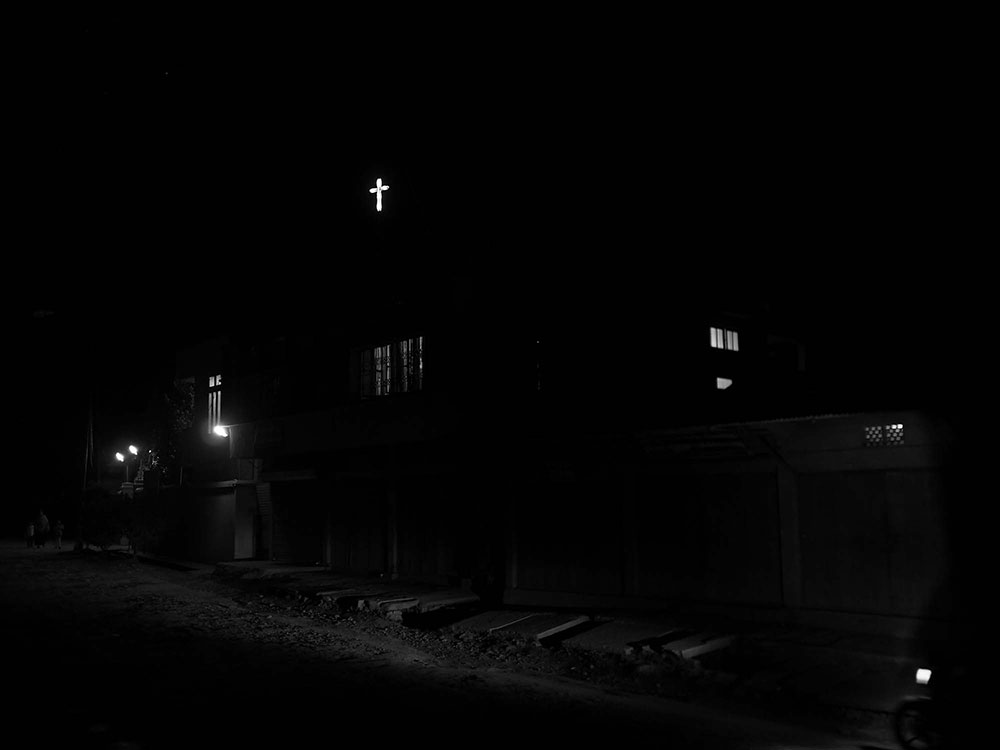Snapshots of a Manipur town that has refused to bury nine people three months after they died
The bodies of the nine tribal men killed by security personnel in Churachandpur have became the symbols of protest in a dispute over land rights.
The protests started on August 31, when the Manipur state assembly passed three bills: the Protection of Manipur People Bill, the Manipur Land Revenue and Land Reforms Bill, and the Manipur Shops and Establishments Bill. The bills were passed after two months of agitation for an inner line permit system for the entire state of Manipur that would regulate the entry of outsiders. It was led by student groups in the valley, where the Meitei people form a majority. The new legislation places restrictions on outsiders owning land or running businesses in Manipur, defines what it means to be a member of the "Manipur people" and grants rights of residence based on this formulation.
Yet the tribes that live in the hills already enjoy certain protections. No outsiders, including those from the valley, are allowed to buy land here and a Hill Areas Committee must vet any law that affects these districts. The three bills will disrupt these old protections, the hill tribes fear. They are seen as an attempt by the Meitei-majority state government to encroach upon tribal lands in the hill districts.
After the bills were passed, the tribal residents of Churachandpur district took to the streets in protest. Nine people died in the arson and violence that followed; six fell to the bullets of security forces. Soon afterwards, a joint action committee to articulate tribal demands was formed and the agitation against the bills was organised around the bodies of the fallen protesters. They became the symbols of protest and Churachandpur entered a long, angry period of mourning. Hundreds gathered to keep vigil with the bodies every day. Nearly three months after they were killed, the town has not buried its dead.
On Monday, the joint action committee announced that it would allow all schools, shops and establishments to resume operations, the Sangai Express reported. But it will continue to keep vigil over the dead.

Protesters burnt the Zonal Education Office.
Angry that the bills were unanimously passed without debate, agitators burnt the houses of their local MLAs who they believed had betrayed the tribal cause by not speaking up in the assembly or resigning in protest. They pelted stones on and set fire to government buildings.

At the burnt bungalow of the state Health Minister, Phungzathang Tonsing, graffiti mentions Thanglianpao Guite, leader of the Zomi Reunification Organisation, a tribal militant outfit that has signed a suspension of operations agreement with the government. Members of local women's organisations burnt down Guite’s house after there were rumours that he had asked the tribal MLAs to not resign.
Families of those killed accepted the wishes of the community and agreed not to bury the "martyrs" until their demands were met. Members of the Churachandpur Autonomous District Council travelled to Delhi to seek assurance that the bills wouldn’t become law.

The morgue at the Churachandpur District Hospital, which houses the nine protestors, does not have the facilities to hold bodies for long periods. Air conditioners had to be installed to deal with the current situation.

Everyday outside the morgue, victims' families are joined in prayer by community members.

Relatives of victims help unload ice slabs to place next to coffins.

A vegetable known to mitigate stench is stacked up in buckets.

A mother who lost her son consoles a woman who lost her grandson, 11-year-old Khaijamang. He died after the police opened fire on protesters trying to storm the police station. No one is sure why he was there that day. His mother recalls that he loved to watch public gatherings.

A church at Khaijamang's village, Bijang.

Houses in Khaijamang’s village put up black flags.

A child returns from school, a long walk from her village. Schools had remained shut for more than a month.

A street in Lamka. Shops that would usually remain open till six in the evening have been downing their shutters at two in the afternoon.

Assam Rifles personnel patrol outside the police station.

Twenty two-year-old Paulianmang was a keen footballer. He was shot when protesters took to the streets soon after the "anti-tribal" bills were passed.

Posters around town question the lethal crowd-dispersal measures used by security personnel.

A man whose 18-year-old nephew, Pausuanlian, was shot in the chest.

On November 9, the home ministry gave a "written assurance" that the hill people would be consulted before any decisions were taken. The decision to bury the martyrs “with the highest dignity and honour” was finally taken on November 14, during a meeting between the Joint Action Committee and tribal councils.
Photo credits: Shashwat Malik.
Corrections and clarifications: This story has been corrected to clarify the circumstances in which the nine deaths occurred.









